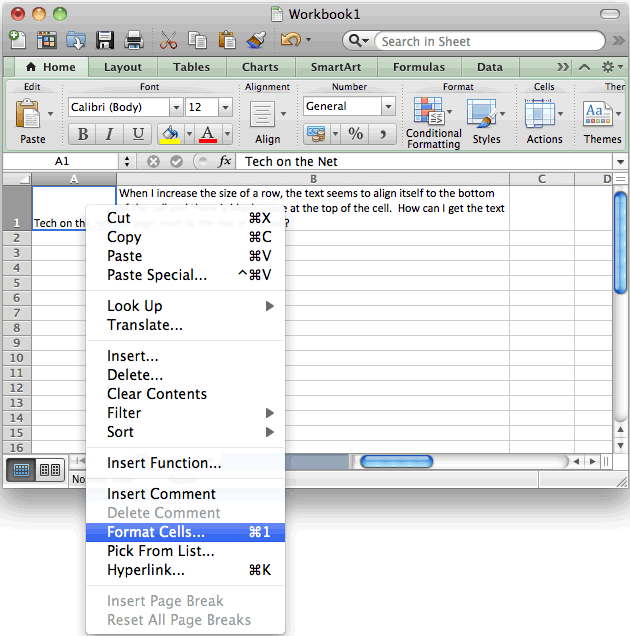
T_numFmtId := workbook.numFmts( i ).numFmtId If workbook.numFmts( i ).formatCode = t_format –M.CHAMBERS: changed from p_format If t_format is null –M.CHAMBERS: changed from p_format T_format varchar2(100) default lower(p_format) –added M.CHAMBERS –M.CHAMBERS: modified to remove case sensitive issue for date formatįunction get_numFmt( p_format varchar2 := null ) , formula varchar2(1000) default null –added M.CHAMBERS , type varchar2(1) default ‘v’ –added M.CHAMBERS –M.CHAMBERS: modified to_cell to add formula functionality , p_formula varchar2 default null –added M.CHAMBERS: cell formula , p_type varchar2 default ‘v’ - added M.CHAMBERS: if = ‘f’ then add p_formula to cell , p_formula varchar2 default null - cell formula , p_type varchar2 default ‘v’ - if = ‘f’ then add p_formula to cell
Change cursor direction in excel for mac 2011 code#
This is my first time posting code changes. Here are the changes I’ve applied:įorgive me if there is a better way to post my changes. || workbook.sheets( s ).rows( t_row_ind )( t_col_ind ).formula If workbook.sheets( s ).rows( t_row_ind )( t_col_ind ).type = ‘f’ then Modified t_cell := statment to include tag for forumla –changes to function finish: loop through cells. || workbook.sheets(s).rows(t_row_ind)(t_col_ind).formula IF workbook.sheets(s).rows(t_row_ind)(t_col_ind).type = ‘f’ THEN Worked for me in XE 10g(not tested for complex formulas or different return type).Īs_xlsx.cell(1,1,”,p_type => ‘f’, p_formula => ‘B1+C1’ ) Īs_xlsx.cell(1,1,”,p_type => ‘f’, p_formula => ‘SUM(B1:C1)’ ) You can try something like this in your code: Workbook.sheets( s ).rows( t_row_ind ).delete() Workbook.sheets( s ).rows := t_clear_rows T_col_ind := lc_rows( t_row_ind ).next( t_col_ind ) Īnother change was made in procedure clear_workbook || to_char( lc_rows( t_row_ind )( t_col_ind ).value, ‘TM9’, ‘NLS_NUMERIC_CHARACTERS=.,’ ) T_col_ind := lc_rows( t_row_ind ).first()
/excel-scroll-bar-slider-hide-resize-fix-56cb3af83df78cfb379b79a7.jpg)
T_col_ind := workbook.sheets( s ).rows( t_row_ind ).next( t_col_ind ) || to_char( workbook.sheets( s ).rows( t_row_ind )( t_col_ind ).value, ‘TM9’, ‘NLS_NUMERIC_CHARACTERS=.,’ )ĭbms_lob.writeappend( t_xxx, t_len, t_tmp ) T_col_ind := workbook.sheets( s ).rows( t_row_ind ).first() T_row_ind := workbook.sheets( s ).rows.first() T_col_max := greatest( t_col_max, lc_rows( t_row_ind ).last() ) T_col_min := least( t_col_min, lc_rows( t_row_ind ).first () ) T_row_ind := workbook.sheets( s ).rows.next( t_row_ind ) T_col_max := greatest( t_col_max, workbook.sheets( s ).rows( t_row_ind ).last() ) T_col_min := least( t_col_min, workbook.sheets( s ).rows( t_row_ind ).first() ) t_row_ind := workbook.sheets( s ).rows.first() We have had the same performance issues, we solved it by changing the following Īdd1xml( t_excel, ‘xl/theme/theme1.xml’, t_xxx )

P.S.11 version 20, but important change: changed to date1904=false

P.S.8 Fixed set_autofilter (only one autofilter per sheet, added _xlnm._FilterDatabase) P.S.4 Fixed issue with XML-escaping from text P.S.3 Fixed issue with timezones with a regionname I have added the possibility to add Comments and MergedCells to the Excel-file Excel itself is a far better tool for such things. The main purpose for this package is getting data from the database into an Excel file, so I deliberate did not include some Excel functionality, such as formulas, into the package. With this package it’s very easy to create an Excel 2007 file with only a few lines of PL/SQL code.Īs_xlsx.query2sheet( 'select * from dual' ) For this project I took an Apex-plugin I have written, (IR) Report to Excel (xlsx), and turned it into a PL/SQL package.


 0 kommentar(er)
0 kommentar(er)
